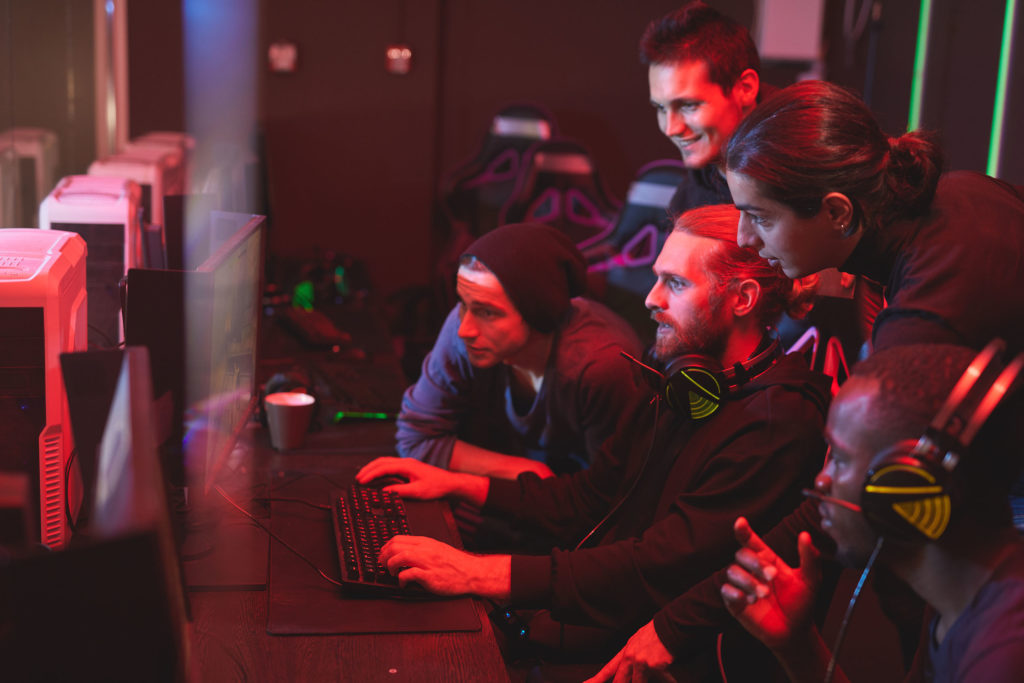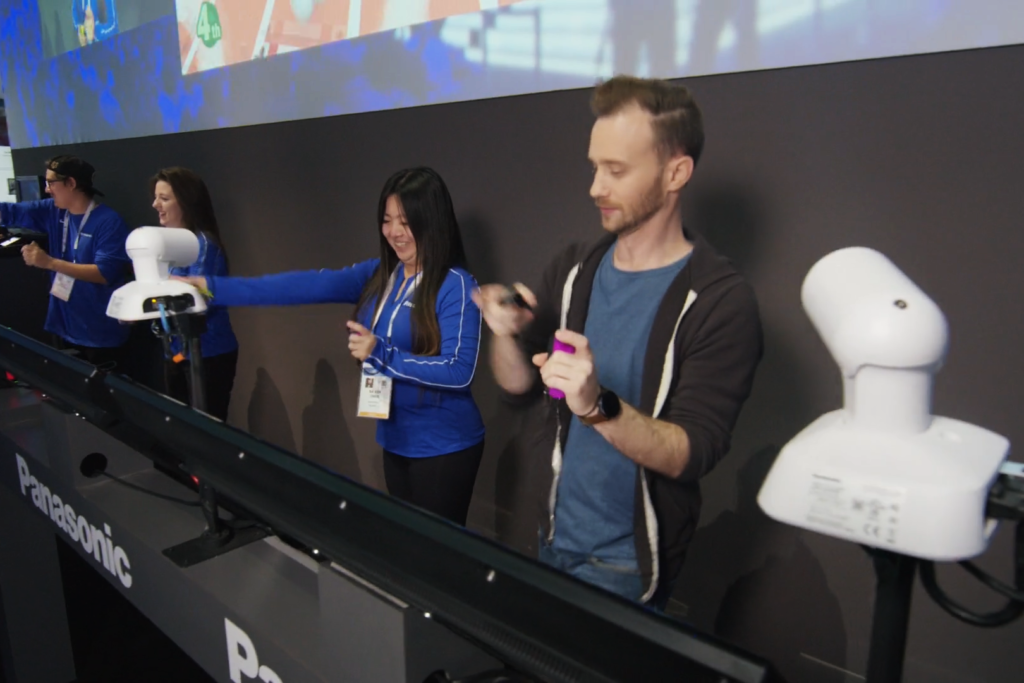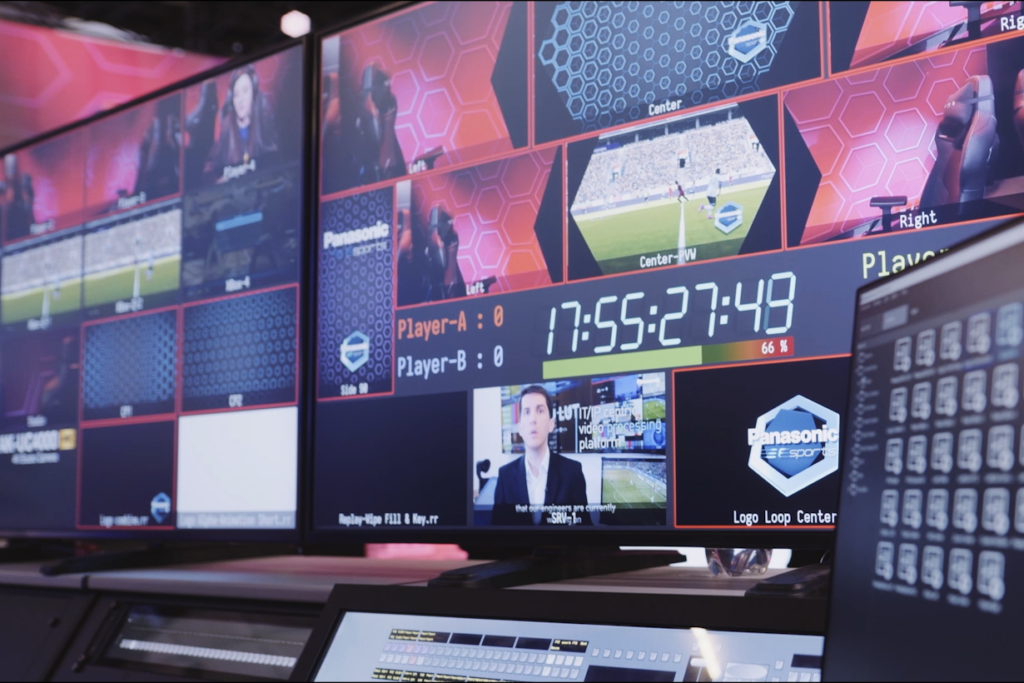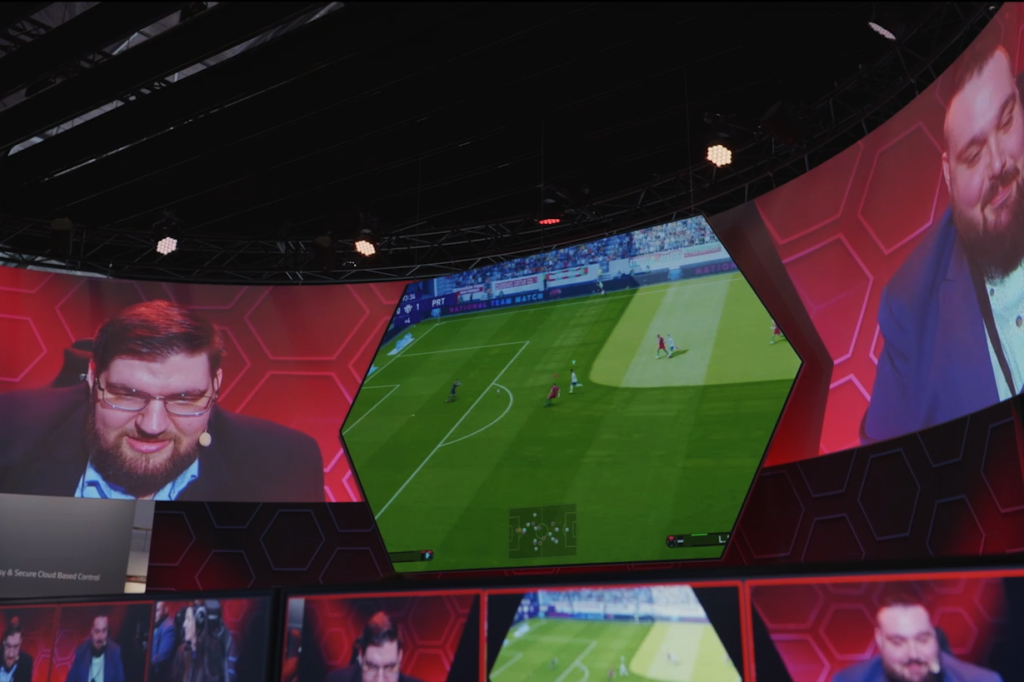August 19, 2020
5 min read
In Building an Esports Venue, Part I, we examined the growth of Esports viewership, as well as the expansion in live and broadcast Esports venues. Perhaps the driving force behind this growth has been online gaming platforms like Twitch and YouTube, which generate millions of unique broadcasters and viewers.
In terms of action, Esports broadcasts look different from traditional sports broadcasts like football or baseball but during a global pandemic, it's the ideal sport/activity for social distancing. While most NCAA reopening plans have been canceled or delayed due to COVID-19, Esports has seen tremendous growth. NACE (National Association of Collegiate Esports) now has over 170 member schools, 5000+ student athletes and over $16 million in Esports scholarships and aid. According to Panasonic Sales Support Engineer Rob Brambila, who previously was the technical producer at Blizzard Entertainment, Esports has become an effective way for universities to appeal to a whole new market segment of students. “Over the next few years, Esports will be their biggest segment, as far as growth."

While most NCAA reopening plans have been canceled or delayed due to COVID-19, Esports has seen tremendous growth.
Esports Combinations
Panasonic has recently developed a seamless glass-to-glass solution to help colleges build their very own Esports venue. This solution includes projectors, professional video and professional display technologies to capture and distribute events both onsite and online in 4K resolution. The combinations have been divided into three venue examples, which include 1) Gaming Facilities; 2) Gaming Arenas; and 3) Gaming Stadiums. The technology and gear portfolio revolve around projectors, flat panel displays, 4K/HD video switchers, robotic PTZ cameras, studio and cinema cameras and camcorders.
Esports Gaming Facilities
For 1,200 - 2,000-foot gaming or training facilities, this venue could be anything from a multi-purpose room or a computer lab, which could be function as training grounds, or as a small introductory Esports venue. "Obviously we have a huge pro video lineup that leverages and lends itself towards Esports broadcasts,” reveals Panasonic Sr. Territory Account Manager Jared Darensbourg. "But with a lot of gaming facilities, you're not going to have a live audience, or even spectators, so you're typically not going to have the same setup as you would for an arena or stadium."

Panasonic Esports display at CES 2020
Professional Video
- AW-UE4 (as POV) PTZ camera
- AW-HE42 PTZ camera
- AV-HLC100 video switcher
Projector
- PT-RZ12K (2x)
Professional Display
- TH-55LFV9U 3.5m 2x2 (4x)
- TH-65C01 U (2x)
- TH-86C01 U (2x)

Esports Gaming Arenas
Professional Video
- AW-UE4 (as POV) PTZ camera
- AW-HE130 (Alternates: AW-UE100 or AW-UE150) PTZ camera
- AV-UHS500 video switcher
- KAIROS IT/IP Video Processing Platform
Projector
- PT-RQ22KU (2x)
Professional Display
- TH-55VF1 HU 1.8mm 3x3 (6x)
- 4K UHD, 350 cd/m2 LED LCD Displays (2x) TH-43/50/55/65/75/86-EQ1U
Esports Gaming Stadiums
Professional Video
- AW-UE4 (as POV) PTZ camera
- AW-UE150 PTZ camera
- AK-UC4000 studio camera
- Kairos IT/IP Video Processing Platform
Projector
- PT-RQ32KU (2x)
Professional Display
- TH-55VF1 HU 0.88mm 5x5 (10x)
- 4K UHD 500 cd/m2, 24/7, SOM, LED LCD Displays (8x) TH-43/55/65/98 SQ1U
Although LED boards are common for large gaming stadiums, what if your institution does not have a multi-million dollar budget to build a 40-feet LED wall? "For large screens, Panasonic offers native 4K projectors, as well as 4K displays on the periphery for the audience to view," explains Darensbourg. "All of our broadcast and display equipment - from studio cameras to PTZ cameras - can fit it within your budget." Panasonic can also advise and source the technology from LED suppliers.

Large projection display
"The one thing you’re not going to use to broadcast an Esports event is a GoPro camera," adds Brambila. "It's almost impossible to try to make a GoPro part of a cohesive broadcast but obviously we can't have giant cameras sitting right in front of these players' faces. Panasonic PTZ cameras are ideal for POV shots of players. With an AV-HLC100 switcher, I can run an entire show off of our AW-UE4s and AW-HE42 PTZ cameras."
Switching for Esports
Even though players are stationary, there's an abundance of visual activity happening in an Esports event. Panasonic's IT/IP-based KAIROS video platform can be the center of your production. The platform achieves higher performance by fully utilizing the power and flexibility of its CPU and GPU, balancing total processing load without the configuration constraints of traditional hardware based systems.
"Esports events heavily rely on graphics because it revolves around a video game," says Brambila. "Typically we need very large switchers, to be able to have a bunch of M/Es (Mixed Effect) available to create all these crazy graphics and to be able to manage multiple areas. KAIROS makes it much easier."
See How KAIROS Can Cover Your Esports Event
For a less complex Esports webstream, because of its unique features, the AV-HLC100 video switcher is an ideal solution for being an all-in-one machine. "If you wanted to cook up your own recipe for being able to stream multiple cameras to the web, you're talking about multiple computers," says Brambila. "It's much easier to just install an HLC100 and connect your cameras to it. Now you've got camera control, graphics, audio mixing, effects and an encoder. It's kind of a no-brainer."
One Stop Solution
Panasonic manufactures a lot of products that can be used for broadcast sports but also applied to distance learning and corporate communication live events. "In our current situation, what we have done is honed and created a product lineup to become a product solution for Esports," reveals Joe Conover, Strategic Initiatives Manager, Panasonic Live Events. "You have our display products, pro video products, as well as the other visual systems products. But what we are striving to become is a full solution provider.
"There's no cookie cutter quick fix where everything will fit inside a box, but this is a good conversation starter by giving you examples of small, medium and large venues," he continues. "This will give you a good design sense of what you need for your space. As a company, it's nice to see us building this technology while learning from our partners, resellers, consultants, and end users to provide solutions in this growing space."
For more information on Panasonic Esports solutions, click through here.
![]()
